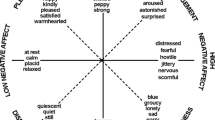Abstract
Music can evoke various emotions, and with the advancement of technology, it has become more accessible to people. Bangla music, which portrays different human emotions, lacks sufficient research. The authors of this article aim to analyze Bangla songs and classify their moods based on the lyrics. To achieve this, this research has compiled a dataset of 4000 Bangla song lyrics, genres and used Natural Language Processing and the BERT algorithm to analyze the data. Among the 4000 songs, 1513 songs are represented for sad mood, 1362 for romantic mood, 886 for happiness, and the rest 239 are classified as relaxation. By embedding the lyrics of the songs, the authors have classified the songs into four moods: Happy, Sad, Romantic, and Relaxed. This research is crucial as it enables a multi-class classification of songs’ moods, making the music more relatable to people’s emotions. The article presents the automated result of the four moods accurately derived from the song lyrics.
Access this chapter
Tax calculation will be finalised at checkout
Purchases are for personal use only
Similar content being viewed by others
References
Zurawicki L (2010) Neuromarketing: exploring the brain of the consumer
Schedl M, Zamani H, Chen C-W, Deldjoo Y, Elahi M (2018) Current challenges and visions in music recommender systems research. Int J Multimedia Inf Retrieval 7:95–116
Nummenmaa L, Putkinen V, Sams M (2021) Social pleasures of music. Curr Opin Behav Sci 39:196–202
Wang Z, Xia G (2021) Musebert: pre-training music representation for music understanding and controllable generation. In: 0001, J.H.L., 0001,A.L., Duan Z, Nam J, Rao P, van Kranenburg P, Srinivasamurthy A (eds.) 22nd International society for music information retrieval conference, ISMIR 2021, Online, 7–12 Nov 2021, pp 722–729
Walaa Medhat HK, Hassan A (2014) Sentiment analysis algorithms and applications: a survey. Ain Shams Eng J 5:1093–1113
Hussein DMEDM (2018) A survey on sentiment analysis challenges. J King Saud Univ Eng Sci 30:330–338
Rabeya T, Chakraborty NR, Ferdous S, Dash M, Al Marouf A (2019) Sentiment analysis of Bangla song review—A Lexicon based backtracking approach, pp 1–7
Mamun MAA, Kadir IA, Rabby ASA, Azmi AA (2019) Bangla music genre classification using neural network. In: 2019 8th International conference system modeling and advancement in research trends (SMART), pp 397–403
Zaanen M, Kanters P (2010) Automatic mood classification using tf*idf based on lyrics, pp 75–80
Kashyap N, Choudhury T, Chaudhary D, Lal R (2016) Mood based classification of music by analyzing lyrical data using text mining, pp 287–292
Raschka S (2016) Musicmood: predicting the mood of music from song lyrics using machine learning. arXiv:abs/1611.00138
Urmi N, Ahmed N, Sifat MH, Islam S, Jameel A (2021) BanglaMusicMooD: a music mood classifier from Bangla music lyrics, pp 673–681
Çano E, Morisio M (2017) Music mood dataset creation based on last.fm tags
Devlin J, Chang M-W, Lee K, Toutanova K (2019) Bert: pre-training of deep bidirectional transformers for language understanding. arXiv:abs/1810.04805
Kaliyar RK (2020) A multi-layer bidirectional transformer encoder for pre-trained word embedding: a survey of Bert. In: 2020 10th International conference on cloud computing, data science & engineering (confluence), pp 336–340
Wolf T, Debut L, Sanh V, Chaumond J, Delangue C, Moi A, Cistac P, Rault T, Louf R, Funtowicz M, et al (2019) Huggingface’s transformers: state-of-the-art natural language processing. arXiv:1910.03771
Chi S, Qiu X, Xu Y, Huang X. How to fine-tune BERT for text classification?
Author information
Authors and Affiliations
Corresponding author
Editor information
Editors and Affiliations
Rights and permissions
Copyright information
© 2023 The Author(s), under exclusive license to Springer Nature Singapore Pte Ltd.
About this paper
Cite this paper
Mahajebin, M., Rashid, M.R.A., Mansoor, N. (2023). Mood Classification of Bangla Songs Based on Lyrics. In: Ranganathan, G., Papakostas, G.A., Rocha, Á. (eds) Inventive Communication and Computational Technologies. ICICCT 2023. Lecture Notes in Networks and Systems, vol 757. Springer, Singapore. https://doi.org/10.1007/978-981-99-5166-6_40
Download citation
DOI: https://doi.org/10.1007/978-981-99-5166-6_40
Published:
Publisher Name: Springer, Singapore
Print ISBN: 978-981-99-5165-9
Online ISBN: 978-981-99-5166-6
eBook Packages: Intelligent Technologies and RoboticsIntelligent Technologies and Robotics (R0)




